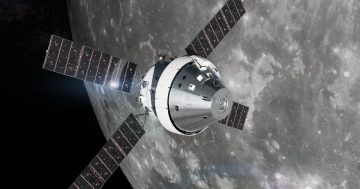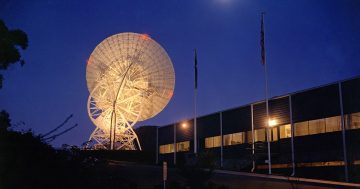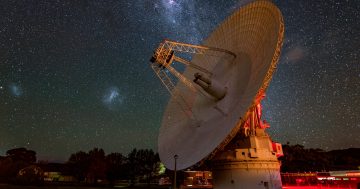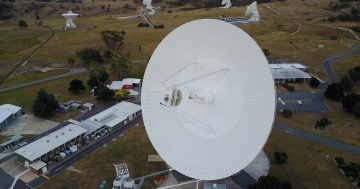As part of the International Year of Astronomy, the local section of the American Institute of Aeronautics & Astronautics (AIAA) in partnership with Questacon proudly presents
AS WE SHALL RETURN: NASA’S NEW INITIATIVE TO LAND ASTRONAUTS ON THE MOON
by Wayne Lee, Altair Vehicle Systems Manager, NASA JPL
Tonight at 6pm at the Japan Theatre at Questacon, King Edward Terrace, Parkes.
This public lecture is FREE and all are welcome.
For more information contact Michael via aiaa.sydneysection[at]gmail.com. No RSVP required, just turn up!
Talk Summary
“As we shall return with peace and hope for all mankind.” Back in 1972, nobody thought 35 years would pass with that message from Apollo 17 commander Gene Cernan still standing as the last words transmitted from the surface of the Moon. Today, NASA is working to fulfill its pledge to return astronauts to the Moon by 2020. This time plans call for a crew of four to explore for up to seven days at a time with the eventual goals of possibly building a permanently occupied lunar base. Doubling both the crew and stay time from the Apollo flights will take a booster larger than the original Saturn V Moon rocket and a lunar lander taller than a two-storey house.
In this talk Wayne Lee will describe NASA’s current lunar exploration plans as well as the gigantic machines currently under design to make it possible.
Speaker Biography
Wayne Lee is Altair Vehicle Systems Manager at NASA. Previously Wayne enjoyed great success as the mission planner for Mars operations at NASA’s Jet Propulsion Laboratory in Pasadena, California. During the mission, Wayne would work with all the elements of the flight team to coordinate trajectories, science plans and spacecraft operations into the overall mission itinerary. Originally from San Diego, Calif., Wayne has degrees from Berkeley in electrical engineering and from the University of Texas in astronautics. Wayne has published a book on spaceflight mechanics for the layperson.
For information about the local AIAA section visit http://www.aiaa.org/portal/sydney and for details about other International Year of Astronomy events visit http://www.astronomy2009.org.au
This event is part of the International Year of Astronomy celebrations. IYA activities in Australia are funded with assistance from the Science Connections Program within the Department of Innovation, Industry, Science and Research.

















